most important and repeated 30 ETEA teaching
jobs MCQs
1. Which teaching
method is most effective for developing problem-solving skills? . مسئلہ حل کرنے
کی مہارتوں کو فروغ دینے کے لیے کون سا طریقہ کار سب سے زیادہ مؤثر ہے؟
A) Lecture
method
B)
Inquiry-based learning
C) Rote
memorization
D) Direct
instruction
Answer:
B) Inquiry-based learning ب) انکوائری پر مبنی
تعلیم)
2.
What is the primary focus of cooperative learning
A)
Individual achievement
B) Group
competition
C)
Collaborative learning and teamwork
D) Teacher-centered
instruction
Answer:
C) Collaborative learning and teamwork
3. What is
the primary goal of classroom management?
A) To
discipline students
B) To create
a positive learning environment
C) To
increase student engagement
D) To
improve student motivation
Answer:
B) To create a positive learning environment
4. Which of
the following is a discipline strategy?
A) Positive
reinforcement
B)
Punishment
C) Time-out
D) All of
the above
Answer:
D) All of the above
5. What is
the primary focus of formative assessment?
A) Grading
students
B) Providing
feedback for improvement
C) Ranking
students
D) Final
evaluation
Answer:
B) Providing feedback for improvement
6. Which of
the following is a type of assessment?
A) Formative
B) Summative
C) Diagnostic
D) All of
the above
Answer:
D) All of the above
7. According
to Piaget, at which stage do children develop abstract thinking?
A)
Sensorimotor
B)
Preoperational
C) Concrete
operational
D) Formal
operational
Answer:
D) Formal operational
8. Which theorist
proposed the concept of "Zone of Proximal Development"?
A) Piaget
B) Vygotsky
C) Bruner
D) Skinner
Answer:
B) Vygotsky
9. What is
the primary goal of curriculum development?
A) To
provide students with knowledge and skills
B) To
promote student autonomy and independence
C) To
facilitate student-centered learning and exploration
D) To
prepare students for future careers
Answer:
C) To facilitate student-centered learning and exploration
10. Which of
the following is a type of curriculum?
A) Hidden
B) Explicit
C) Null
D) All of
the above
Answer:
D) All of the above
11. What is
the primary role of a teacher in a constructivist classroom?
A)
Transmitter of knowledge
B)
Facilitator of learning
C)
Disciplinarian
D) Evaluator
Answer:
B) Facilitator of learning
12.
According to Erikson, what is the primary psychosocial crisis of adolescence?
A) Trust vs.
mistrust
B) Autonomy
vs. shame and doubt
C)
Initiative vs. guilt
D) Identity
vs. role confusion
Answer:
D) Identity vs. role confusion
13. According
to Piaget, what is the primary way that children develop cognitively?
A) Through
assimilation
B) Through
accommodation
C) Through
equilibration
D) Through
schema formation
Answer:
B) Through accommodation
14. Which of
the following is a stage of cognitive development, according to Piaget?
A) Sensor
motor
B)
Preoperational
C) Concrete
operational
D) All of
the above
Answer:
D) All of the above
15. What is
the primary goal of using technology in the classroom?
A) To
provide direct instruction and guidance
B) To
facilitate student-centered learning and exploration
C) To
provide feedback and assessment
D) To
promote student autonomy and independence
Answer:
B) To facilitate student-centered learning and exploration
16. Which of
the following is a type of educational technology?
A)
Multimedia
B)
E-learning
C) Blended
learning
D) All of
the above
Answer:
D) All of the above
17. What is
micro teaching?
a) Teaching
a small group of students
b) Teaching
a specific skill or concept
c) Teaching
for a short duration (5-20 minutes)
d) All of
the above
Answer:
d) All of the above
18. What is
the main purpose of micro teaching?
a) To
evaluate teacher's performance
b) To
improve teacher's skills
c) To reduce
teacher's stress
d) To
increase student's engagement
Answer:
b) To improve teacher's skills
19. What is
a lesson plan?
a) A
detailed outline of what to teach
b) A general
idea of what to teach
c) A list of
teaching materials
d) A
teacher's personal notes
Answer:
a) A detailed outline of what to teach
20. What are
the essential components of a lesson plan?
a)
Objectives, materials, and procedure
b)
Introduction, body, and conclusion
c)
Assessment, evaluation, and feedback
d) All of
the above
Answer:
d) All of the above
21. What is
classroom management?
a) Managing
student behavior
b) Managing
teaching materials
c) Managing
lesson plans
d) Managing
teacher's time
Answer:
a) Managing student behavior
22. What are
some strategies for effective classroom management?
a) Setting
clear rules and expectations
b) Using
positive reinforcement
c)
Encouraging student participation
d) All of
the above
Answer:
d) All of the above
23. What is
the difference between assessment and evaluation?
a)
Assessment is formal, evaluation is informal
b)
Assessment is ongoing, evaluation is summative
c)
Assessment is diagnostic, evaluation is prognostic
d)
Assessment is quantitative, evaluation is qualitative
Answer:
b) Assessment is ongoing, evaluation is summative
24. What are
some types of assessment?
a) Formative,
summative, and diagnostic
b) Quizzes,
tests, and exams
c) Projects,
presentations, and portfolios
d) All of
the above
Answer:
d) All of the above
25. Who is
the founder of the behavioral learning theory?
a) John B.
Watson
b) B.F.
Skinner
c) Ivan
Pavlov
d) Edward
Thorndike
Answer:
a) John B. Watson
26. What is
the main idea of the cognitive learning theory?
a) Learning
is a behaviorist process
b) Learning
is a cognitive process
c) Learning
is a social process
d) Learning
is a emotional process
Answer:
b) Learning is a cognitive process
27. What is
the demonstration method of teaching?
a)
Teacher-centered approach
b)
Student-centered approach
c)
Experiential learning approach
d) Visual
learning approach
Answer:
d) Visual learning approach
28. What is
the discussion method of teaching?
a)
Teacher-centered approach
b)
Student-centered approach
c)
Experiential learning approach
d) Social
learning approach
Answer:
b) Student-centered approach

